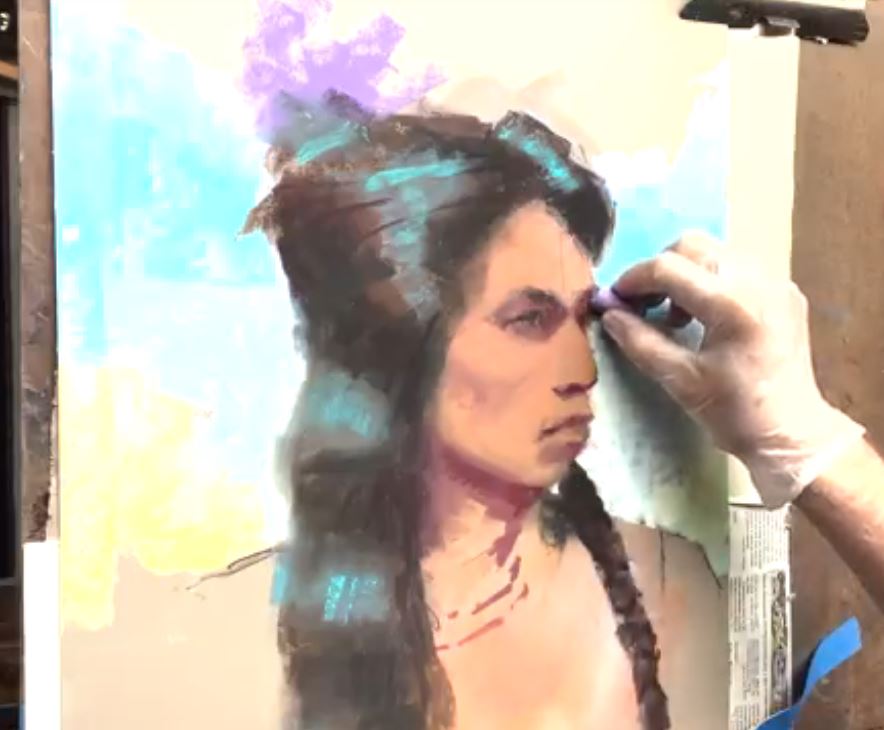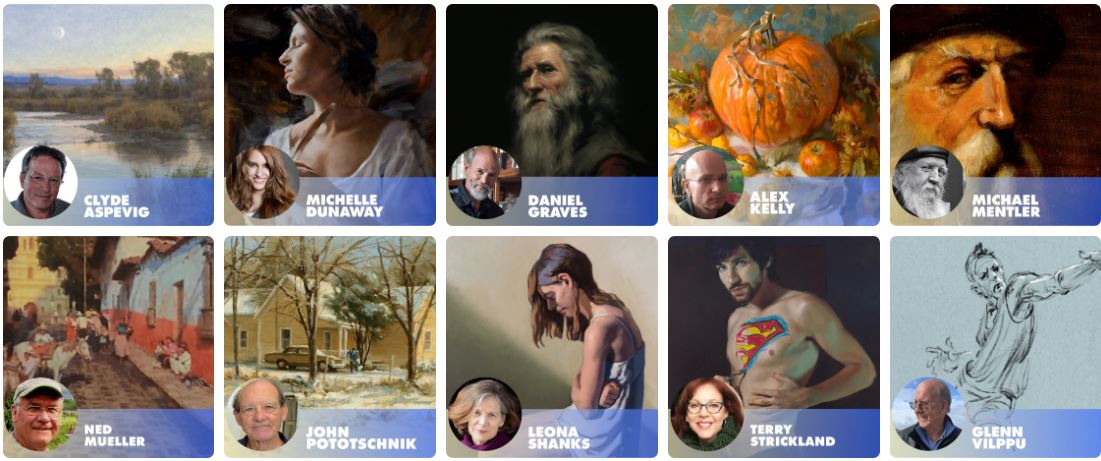Enjoy a recap of the 2nd Annual Pastel Live, an unforgettable virtual event for artists of all levels of painting with pastels. This year, we welcomed a new co-host: Gail Sibley, Editor of Pastel Today!
To begin, here’s what one of our attendees had to say on Day 3 of Pastel Live:
“What a few days this has been,” said artist Anna Bryant Dolly. “I am certainly not ready for today to be the end of Pastel Live! While I love what I do, the context in which I do it makes it mostly just a job, not an exploration of art (contract pet portraits – not just straight commissions – it’s piece work). Pastel Live has successfully pulled me out of the stressors of that job and reminded me in a big way what art is to me and that is so much more than what I can squeeze into a tiny 6-inch canvas.
“I have so much more to learn and am thankful for that … I never want to reach the end of learning. Thank you all – faculty, staff, and participants, all of you, for being part of a dynamic that I won’t ever forget and will always treasure. I’m sure I’m not the only one who will be going through replays over and over to reinforce all the goodies I’m discovering.”
And, thank you to our incredible sponsors for their informational sessions at Pastel Live this year: Blick Art Materials, Savoir-Faire, and the Laguna Plein Air Painters Association.
(If you missed Pastel Live, make sure you sign up today for our next virtual art conference: Realism Live, which includes a variety of subjects and faculty plein air painters such as Clyde Aspevig!)
Still Life and Portrait Highlights from Pastel Live
See the highlights from each day at our sister site, PastelToday.com.
Gail Sibley led us through two demonstrations, including one on how to paint a still life, which is “a wonderful opportunity to work from life,” she said. “You could choose any single object … just make sure you choose something that excites you.” She went on to explain that the first thing to consider is your lighting.

William Schneider, who is known for his expressive portraits and figurative art, led us through one specific way to begin a portrait. When doing so, the first question he always asks himself is, “What is the temperature of the light?” He explained that “it’s so important because cool light generates warm shadows, and warm light generates cool shadows.”

Coming to us all the way from Scotland, Lynn Howarth shared the techniques and tips she has developed over the years, covering all aspects of pastel portraiture, from the initial sketch to the fully finished painting.

Jen Evenhus began her workshop with a unique underpainting technique that led to a painting of one of her favorite subjects: a still life of radishes, because they’re “fun and colorful.” In this photo, she’s about to put the finishing touch on the painting – her final signature.

To begin a work, Rita Kirkman likes to use a smooth surface for her underpainting, creating her own texture for her pastels. She explained this process as she demonstrated how to paint a “cute and fuzzy” rabbit from a photo reference.

“Hyperrealism takes patience,” said Michael Freeman, who joined us from New Zealand to share his complete process for painting a realistic scene in pastel.

Ukranian artist Vera Kavura joined us by painting her favorite theme – a realistic floral still life in pastel. She always paints from a live bouquet using natural light; her work “begins with the composition of a bouquet, with the selection of flowers based on their form and color.”

Using pastel pencils for a still life from her “Little Moments, Big Memories” series, Michele Ashby explained how to use light and shade to add realism to a number of basic shapes; how to apply various shadows to emphasize a 3-dimensional look, and blending techniques for smoother gradations.

Carol Peebles focused on getting a likeness from life in the classical realist tradition. She began by working from a live model, and later from a reference on her phone so that her demonstration was from the same vantage point as those of us who followed along with her demo.

Suzanne Godbout said she prefers to paint from life (versus using a photo reference) because it allows her to see the subtle colors in the light and shadows. “My goal is to interpret this subject,” she said, explaining that she takes some liberties with the drawing and the color as she paints her subject – in this case, a still life that features a silver bowl, white cloth, and fruit.

Joining us all the way from Australia, Lyn Diefenbach taught us to make a photo reference work for your painting vision. She demonstrated how to remove “rubbish” from the background, change the value relationships, and use both negative and positive space.

For a limited time, replays are available for this year; you can also join us live for next year’s Pastel Live virtual art conference! Simply visit PastelLive.com now and register for the best personal instruction and live interactions with artists from all over the world.
Remember, sign up today for our next virtual art conference: Realism Live, which includes a variety of subjects and faculty painters such as Clyde Aspevig, Michael Mentler, Daniel Graves, Terry Strickland, and more (shown below). You don’t want to miss it!





